What Are the Safest & Healthiest Oils for Cooking?
If you’re using cooking oils in your kitchen, you need to learn which are the healthiest and safest oils for cooking. This article reviews six of the best oils for your healthy kitchen, plus which cooking oils to avoid.
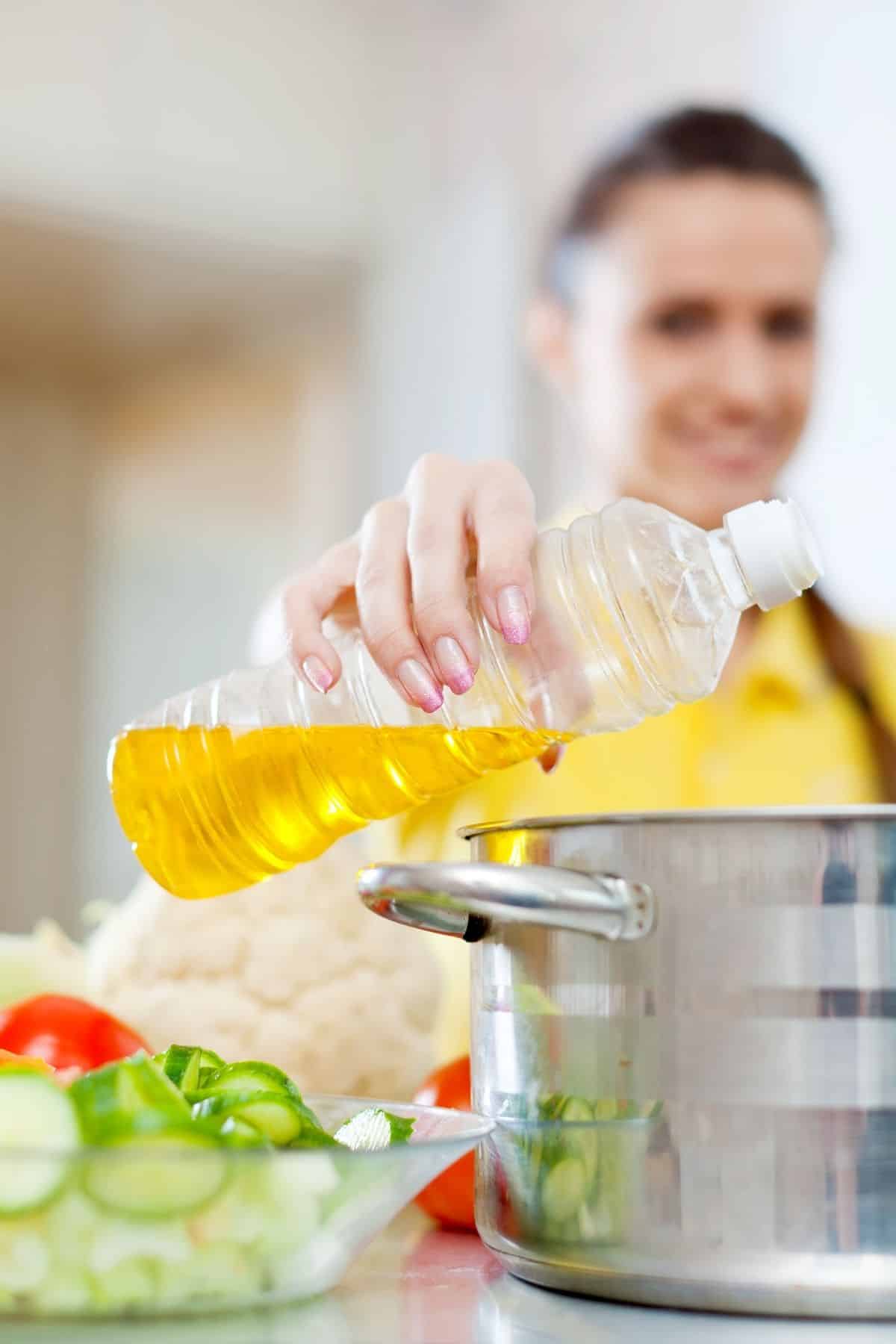
Cooking oils are, very simply, oils that you can use in cooking or baking. Cooking oil is most popularly used when roasting, sauteing, or pan-frying foods. It’s also often used in baking as a butter substitute.
Cooking oils come in many different varieties and all are extracted from nuts/seeds, fruits or vegetables, or rendered from animals.
It’s true that you do need to be cautious about which are the healthiest cooking oils. It’s important to examine where the oils came from, if you are going to be using them at high temperatures, and which oils have a high smoke point or a low smoke point.
Safe Cooking Oil (Short List)
- Avocado oil
- Coconut oil
- Animal fat
- Ghee or butter
- Palm shortening
- Olive oil
Cooking Oil Smoke Points
One of the most important factors when choosing a cooking oil is its smoking point, otherwise known as at what temperature the oil will begin to smoke.
Due to their chemical make-up and refinement, different oils will have different thresholds for surviving heat. At an oil’s smoking point, free fatty-acid production increases dangerously.
Be sure to choose your cooking oil based upon the temperature you’ll be using in cooking. You can find a reference guide for oil smoking temperatures, but keep in mind that opinions differ on smoke points.
Use discretion when cooking to determine if your oil has crossed the threshold. If your oil is smoking excessively, smells bad, and tastes burnt, dispose of it and start again with a lower heat or a different oil that is safe at higher temperatures.
Safest Oils to Use for Cooking (Plus Recommended Brands)
1. Avocado Oil
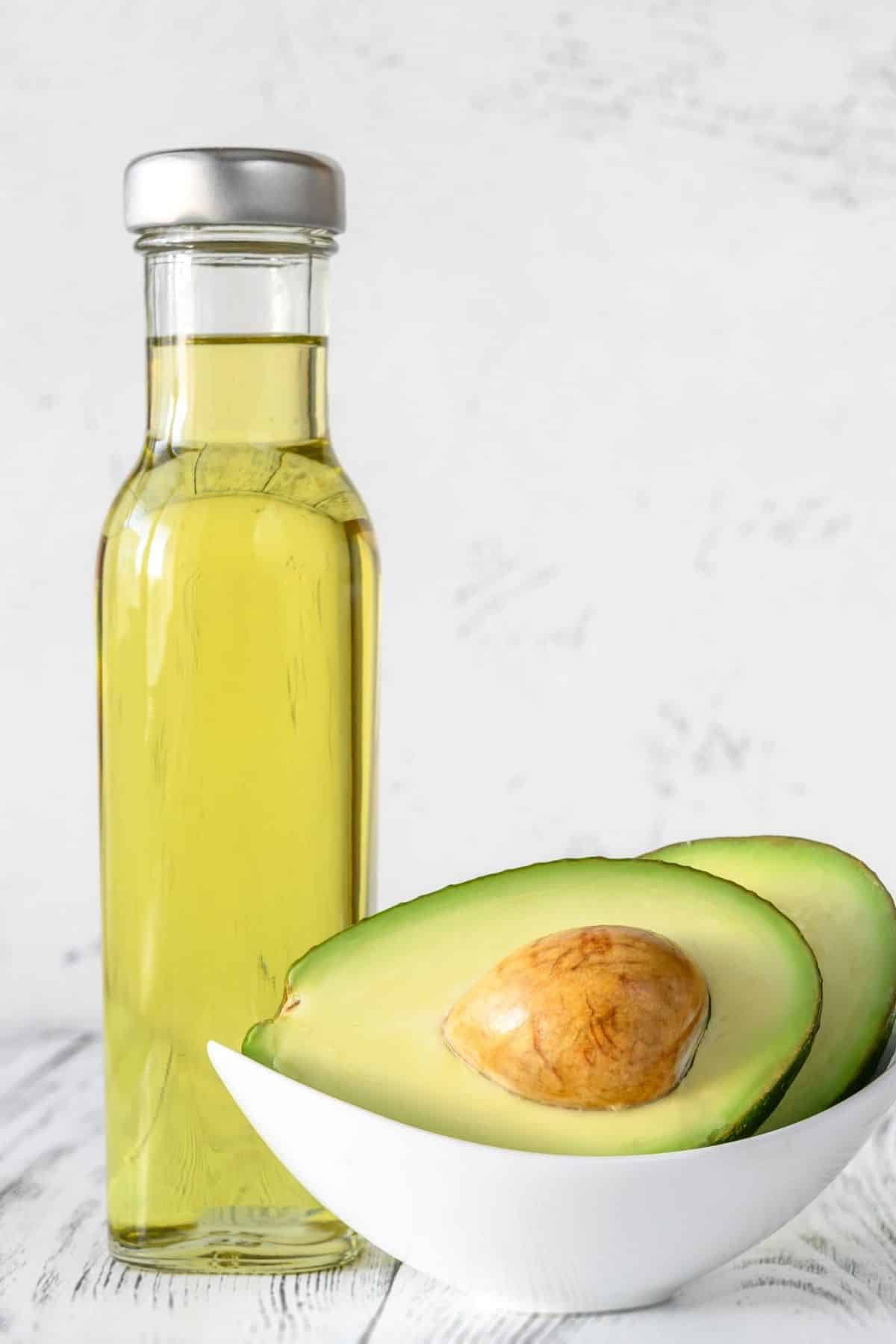
Similar to heart-healthy olive oil, avocado oil has a very high smoking point and a neutral taste that makes it a top choice for cooking oil!
I like the Chosen Foods brand of avocado oil. The oil does not taste like avocados and is a healthy oil. The only downside is that it can be expensive, especially if you are using lots of it for cooking processed like frying.
Read more more about refined avocado oil versus unrefined avocado oil.
2. Coconut Oil
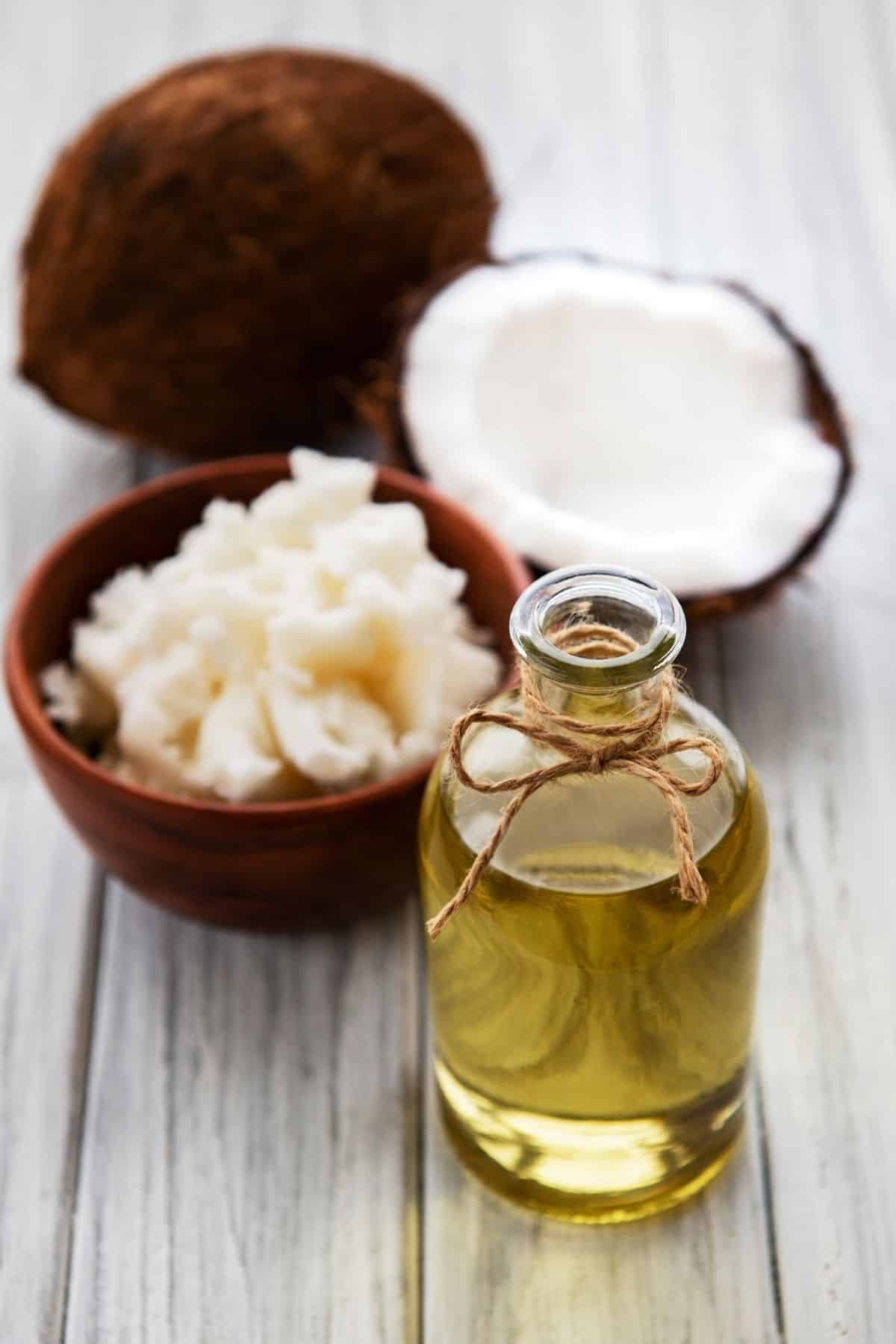
Refined coconut oil is a neutral-tasting oil that can be used in high-heat cooking while still offering beneficial lauric acid and other medium-chain triglycerides.
You can also use virgin coconut oil, but keep in mind that it has a lower smoking point and a coconut flavor (which makes it excellent for baked goods!). You can find coconut oil everywhere these days.
Some people argue that the saturated fats can increase the risk of heart disease, but that has not been proven. If you are concerned about cardiovascular risk and the intake of saturated fats, you may wish to reduce your consumption or switch to other healthy cooking oils like olive oil.
I like the Nutiva brand of coconut oil.
3. Animal Fats
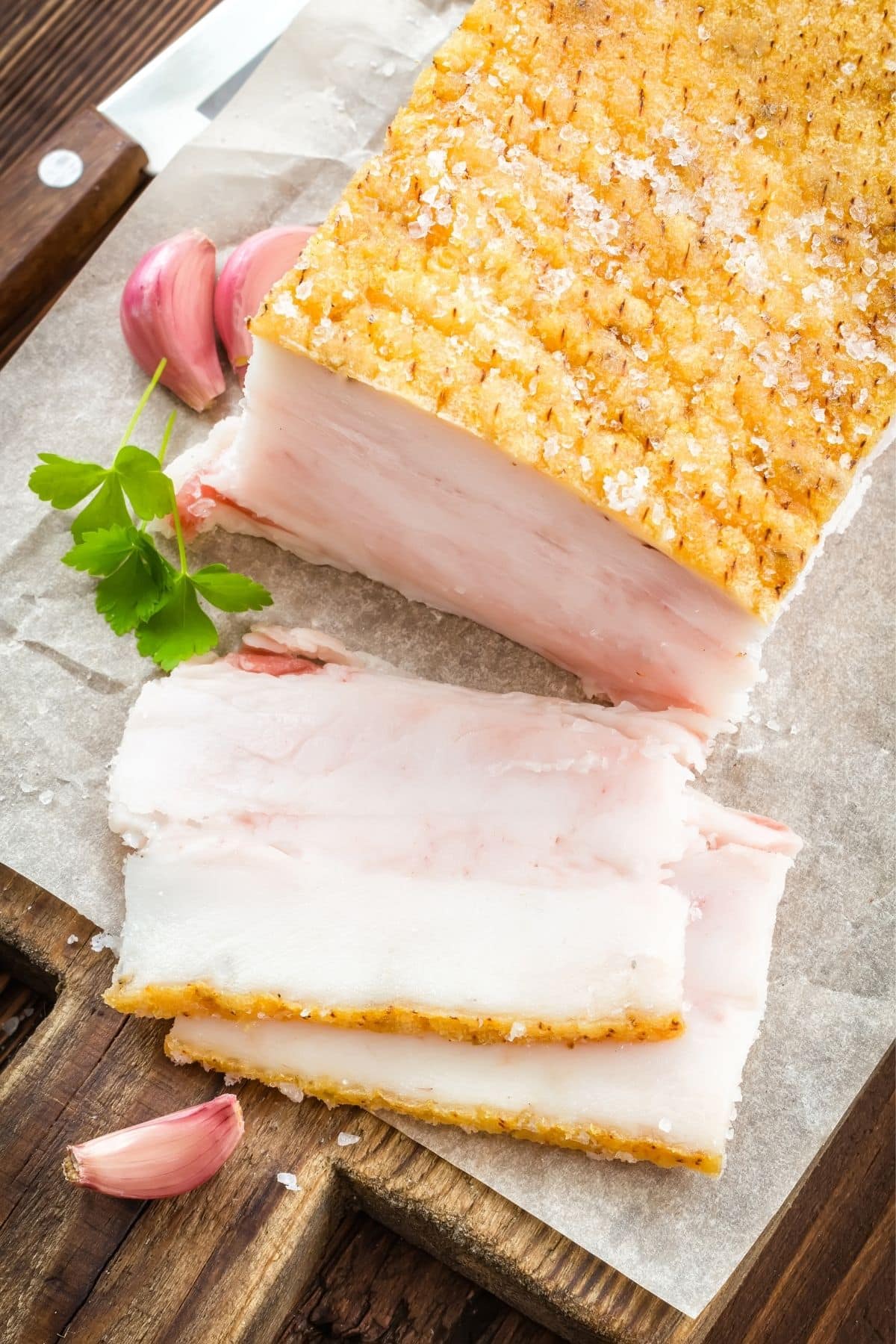
Rendered animal fats such as beef tallow, chicken schmaltz, duck fat, and lard are saturated fats that are heat stable. They lend a wonderful flavor to food and are safe for high-heat cooking due to their high smoke points.
Epic makes a great duck fat.
Animal fast tend to have higher smoke points and can be used at high levels of heat in general.
4. Ghee and Butter
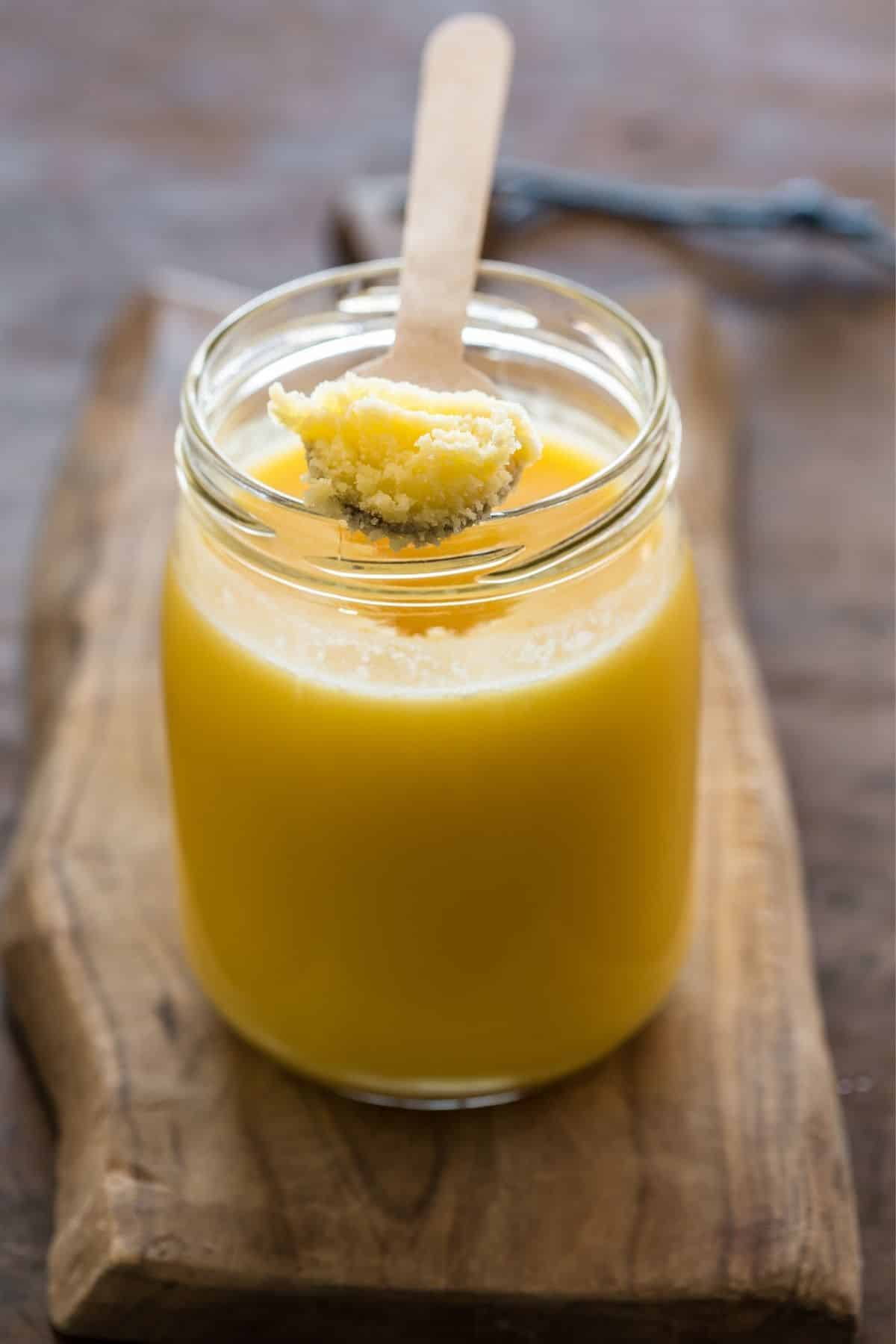
If you tolerate dairy, consider using butter and ghee as cooking oils.
Even if you’re lactose-intolerant, you may want to try ghee, which contains almost no lactose or casein. Both butter and ghee impart a rich flavor to foods.
Because the milk solids are removed, ghee can be used for higher heat cooking than butter, which is best used for stovetop cooking. I use Ancient Organics brand of ghee. Grass-fed ghee is also a nice source of nutrition.
5. Palm Shortening
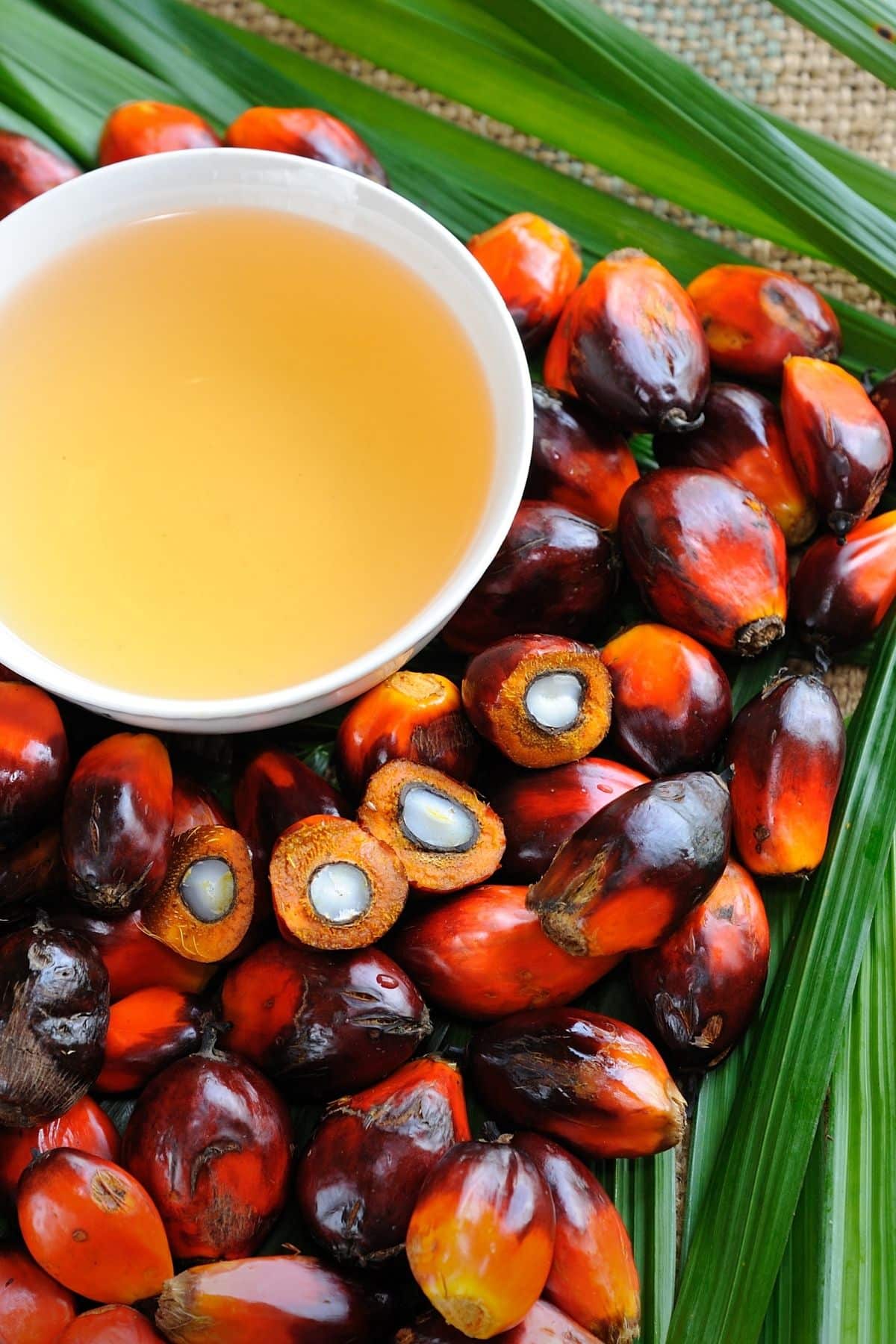
Palm shortening is very heat stable and has a neutral flavor. It is a favorite for baked goods and deep frying.
Be sure to choose a sustainably-harvested option like this red palm oil from Nutiva that has the added benefit of being a nice source of vitamin E.
Palm oils like red palm oil can be great for cooking, but the higher quality brands do tend to be more expensive.
See my recipe for Red Palm Oil Roasted Zucchini.
6. Olive Oil
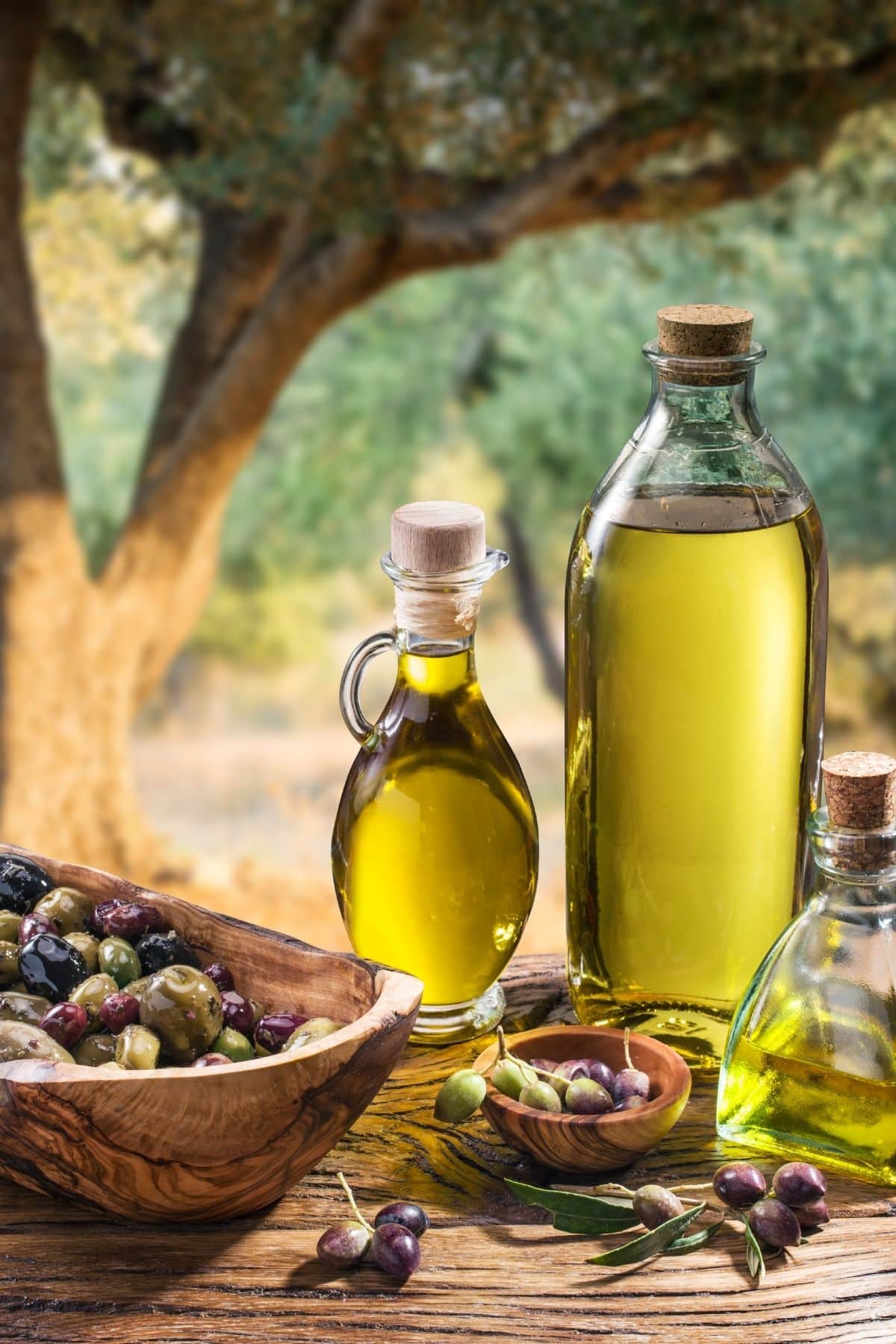
While you might use olive oil in your salad dressings, it can also be used for cooking. Contrary to popular belief, olive oil withstands heat quite well. Even extra virgin olive oil can be used in cooking with little degradation or loss of nutrients.
Olive oil is high in heart-healthy, antioxidant-rich oleic acid and polyphenols. Olive oil is also a rich source of monounsaturated fats, which are considered a “good fats”.
I like a good California olive oil for most of my cooking. I also use olive oil in my homemade salad dressings including my Honey Mustard Salad Dressing and my Simple Vinaigrette.
See my list of substitutes for olive oil.
Other oils, such as some cold-pressed seed oils, are nutrient-rich and offer a unique flavor to foods. But, since cold-pressed seed oils like walnut oil or sesame oil don’t withstand heat well, it’s best to reserve them for dressing salads.
Cooking Oils to Avoid
Avoiding industrial seed oils is considered important for health because these oils often contain high levels of Omega-6 fatty acids, which can disrupt the balance of Omega-6 to Omega-3 fatty acids in the body. This imbalance is linked to increased inflammation, a risk factor for various chronic diseases.
Additionally, many of these oils undergo heavy processing and may contain residues of chemicals used in extraction, potentially affecting their nutritional quality.
- Soybean Oil
- Corn Oil
- Cottonseed Oil
- Canola Oil
- Sunflower Oil
- Safflower Oil
- Grapeseed Oil
- Rice Bran Oil
- Peanut Oil
- Sesame Oil
- Rapeseed Oil
- Margarine and Shortening (often made from these oils)
- Vegetable Oil (a blend of various seed oils)
Saturated Fats Versus Unsaturated Fats
Saturated fats are generally the safest to cook with in terms of health benefits due to their stability.
The hydrocarbon tail of saturated fat is simple and fully bonded with double bonds, which makes them solid at room temperature and more stable. Most saturated fats have a smoke point of 250-450°F, making them suitable for sautéing, baking, and roasting.
There are also plenty of monounsaturated and polyunsaturated oils suitable for cooking. When choosing an unsaturated fat for cooking, consider the refinement and extraction process.
Cold-pressed and unrefined oils retain more nutrients and polyphenols, but are more fragile than their refined and expeller-pressed counterparts. In general, choose refined oils for high-heat cooking (425-575°F) and leave unrefined and cold-pressed oils for lower-heat baking, cooking, and sauteing (200-400°F).
When choosing a cooking oil, you also want to consider the nutritional benefits of the oil. It’s a good idea to vary your cooking oils so you increase and diversify your nutrient intake.
Cook with a variety of saturated and unsaturated fats, and try to include more oils with an optimal omega-3 to omega-6 fatty acid ratio. Omega-3 fatty acids are anti-inflammatory and are consumed far less than omega-6 fatty acids in our modern American diets.
As a rule of thumb, polyunsaturated cooking oils offer far more omega-6 fatty acids than saturated cooking oils from pasture-raised animals.
History of Cooking Oils
We’ve been eating fats in the form of animal organs and tissue and some fruits and vegetables and nuts and seeds since the advent of humanity. Oil made for cooking and consumption has been around for the past 8,000 years or so, with the introduction of olive oil.
Along with olive oil, palm and coconut oil (first seen around 6,000 years ago) were highly prized in trading. Soybean oil was first introduced only around 1,000 years ago in parts of Japan and China, but was not widely traded due to its fragility.
Cooking oils underwent a change in manufacturing in the late 1800s with the creation of hexane extraction. This made oils less likely to go rancid and allowed for increased manufacturing and trading, but also increased their processing and refinement. In recent history, industrial oils have become increasingly refined, bleached, and deodorized.
Cooking oils are a great way to add flavor and fat to food. However, be selective about the oils you choose to consume. It’s important to know how the oil was made. So, quality matters, as does the type of oil you use.
There is not just one best oil to use. In this article, I’ve shared six of my favorite safest cooking oils and healthy fats.
FAQs
Vegetable oil has been the choice of home chefs and restaurants for decades. Vegetable oil usually contains canola oil, soybean oil, or other seed oils. Vegetable oil has been available since the advent of hydrogenation in the late 1800s. The issue with vegetable oils is that they are highly refined and chemically produced, retaining little to no nutritional value.
Mass produced vegetable oils are chemically extracted in mass quantities and stored in plastic bottles, undergoing the brightness and hot temperatures of shipping and grocery store shelves. Be wary as they are often rancid before they reach the shelves, much less your pantry.
The other seeds present in vegetable oil are most often derived from genetically-modified crops, as well. In addition, these oils are very high in polyunsaturated fats and omega-6 fatty acids, which must be carefully consumed in moderation with omega-3 fatty acids for the optimal ratio.
Yes, olive oil is safe to cook with! It is more fragile than some oils, though so olive oil shouldn’t be used for deep frying or excessively high heat. It is also prudent to be sure you’re getting real olive oil in a dark glass bottle, from a reputable brand. Keep the heat below 400 degrees to be safe, but don’t fear cooking with olive oil.
Unrefined, cold-pressed peanut oil is less offensive health-wise than its other vegetable oil counterparts such as canola or soybean oil. It’s not as fragile as other oils, but be careful to only consume unrefined peanut oil stored in glass bottlesu002du002dpreferably non-GMO peanut oil.
Sunflower oil, high in Vitamin E and oleic acid, is another oil that’s okay in moderation if you’re consuming high-quality oil. Go for high-oleic, cold-pressed sunflower oil stored in a dark glass bottle.
Sunflower oil, like other seed oils, is highly susceptible to oxidation. It’s also high in omega-6 fatty acids. Thus, it’s best to use a quality sunflower oil in moderation.
Take care when disposing of your cooking oils! They should never be poured down the sink or garbage disposal, as they will eventually solidify and clog your drain or pipes.
For saturated fats such as coconut oil and animal fats, allow them to harden again before disposing. Then you can toss them directly in the trash or compost, or place inside a disposable container.
For oils that are liquid at room temperature, such as olive oil or refined liquid coconut oil, pour into a closed container and throw in the trash or compost.
More Articles About Healthy Cooking Basics
Conclusions
It’s important to be cautious about which oils you use for cooking and eating. The safest oils include avocado oil, coconut oil, olive oil, palm oil, ghee or butter, or other animal fats. Avoid using canola and vegetable oils.
Don’t forget to join my newsletter list to get exclusive clean eating recipes and tips. The newsletter is 100% free with no spam; unsubscribe anytime.
About the Author: Carrie Forrest has a master’s degree in public health with a specialty in nutrition and is a certified holistic nutritionist. She is a top wellness and food blogger with over 5 million annual visitors to her site. Carrie has an incredible story of recovery from chronic illness and is passionate about helping other women transform their health. Send her a message through her contact form.
Note: this post is for informational purposes only and is not intended as medical advice. Please consult your healthcare provider for recommendations related to your individual situation.


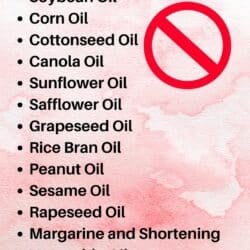
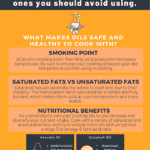
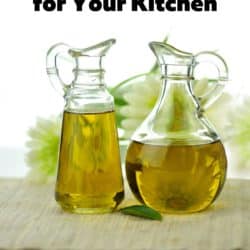
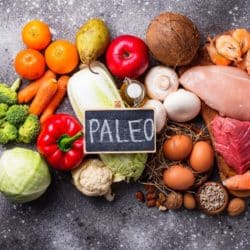




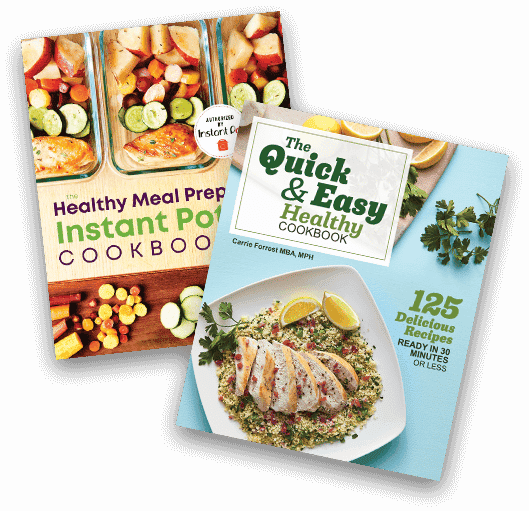

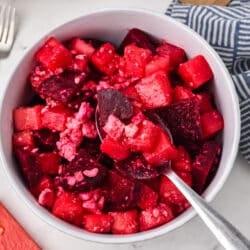


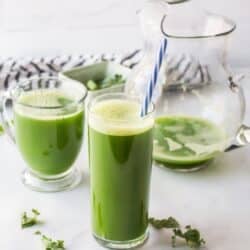

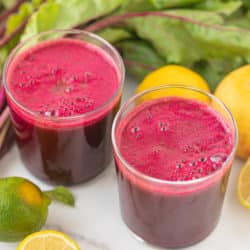


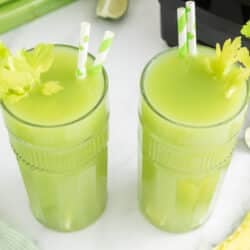


I have been using grapeseed oil due to it’s higher smoke point. I don’t see anything about this one in your post. Is it in the vegetable oil category? Thanks.
Grapeseed is not considered a vegetable oil, and it has some good points. But, it is high in omega-6s.
It is so interesting I was searching for this topic for a long time. I read this article very carefully and now I got all my best information for writing a blog on sunflower oil supplier. I am so glad that I finally find a blog resemblance to my topic. Thanks for this.
Hi Carrie,
This article is very helpful for health conscious people. Thank you for these important sharing. Personally I prefer Avocado Oil and Olive Oil for cooking.
Thank you for sharing this. I passed by the Avocado Oil at Trader Joe’s because I wasn’t sure if it was healthy. Now after reading this I will pick some up next time. I usually just use Olive Oil for cooking and salads.
Great I’m glad you found the article helpful! I know it can be confusing with so many choices.
Is rapeseed oil okay?
Avoid it. Rapeseed oil is a processed vegetable oil.
I primarily use olive oil and avocado oil. I especially love some of the oil drizzled on my salads! There are so many types of oils out there and I would get overwhelmed with choosing the healthiest option. Now I just stick to those two olive oil and avocado oil and I’m able to cook everything with those.
My top two choices are olive oil and canola oil. I didn’t know that about canola oil, I like it because it’s very light. Looks like I’ll be opting out of canola.